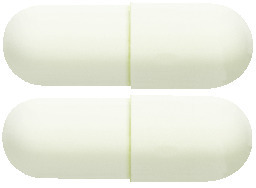1. Why am I using Blooms The Chemist Cefalexin?
Blooms The Chemist Cefalexin contains the active ingredient cefalexin monohydrate. Blooms The Chemist Cefalexin is an antibiotic used to treat infections in different parts of the body caused by bacteria. For more information, see Section 1. Why am I using Blooms The Chemist Cefalexin? in the full CMI.
2. What should I know before I use Blooms The Chemist Cefalexin?
Do not use if you have ever had an allergic reaction to Blooms The Chemist Cefalexin or any of the ingredients listed at the end of the CMI. Talk to your doctor if you have any other medical conditions, take any other medicines, or are pregnant or plan to become pregnant or are breastfeeding. For more information, see Section 2. What should I know before I use Blooms The Chemist Cefalexin? in the full CMI.
3. What if I am taking other medicines?
Some medicines may interfere with Blooms The Chemist Cefalexin and affect how it works. A list of these medicines is in Section 3. What if I am taking other medicines? in the full CMI.
4. How do I use Blooms The Chemist Cefalexin?
- The usual adult dose is 500 mg every 6 hours.
- Your doctor may recommend a different dose depending on your condition.
More instructions can be found in Section 4. How do I use Blooms The Chemist Cefalexin? in the full CMI.
5. What should I know while using Blooms The Chemist Cefalexin?
| Things you should do |
|
| Things you should not do |
|
| Driving or using machines |
|
| Drinking alcohol |
|
| Looking after your medicine |
|
For more information, see Section 5. What should I know while using Blooms The Chemist Cefalexin? in the full CMI.
6. Are there any side effects?
Common side effects: vaginal thrush - sore and itchy vagina and/or discharge, oral thrush - white, furry, sore tongue and mouth, itching of the genital area and the skin around the back passage, headache, agitation, confusion, painful, swollen joints indigestion, stomach pain or discomfort, diarrhoea, nausea, vomiting, dizziness, unusual tiredness.
Serious side effects: confusion and hallucinations (seeing, feeling, or hearing things that are not there), yellowing of the skin and eyes, dark coloured urine, bleeding or bruising more easily than normal.
For more information, including what to do if you have any side effects, see Section 6. Are there any side effects? in the full CMI.

